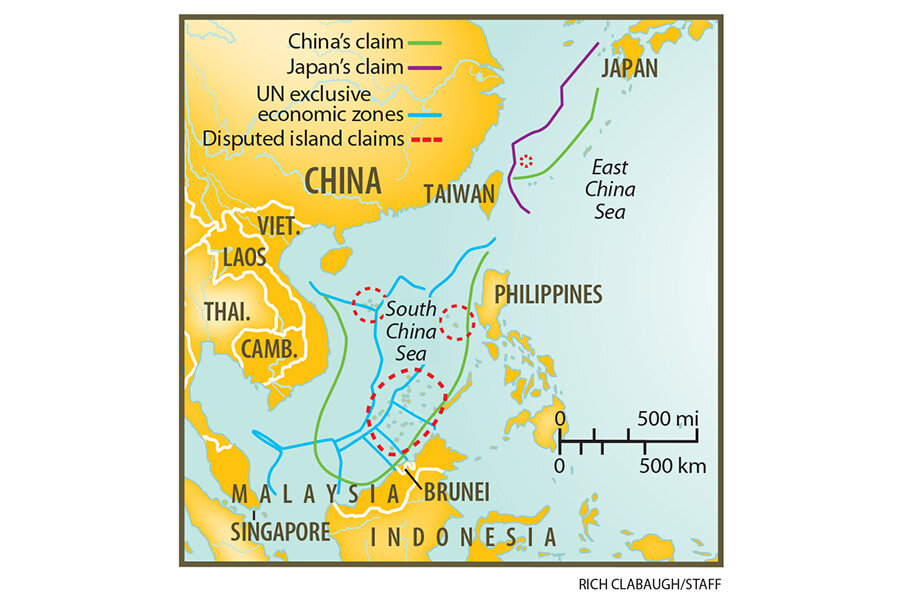Eyeing China, US allies in Asia join naval drills in disputed waters
Loading...
The Philippines has begun separate naval exercises with the United States and Japan on an island near the disputed Spratly archipelago, where China’s growing military presence has unnerved its rival claimants.
This week’s drills follow Beijing’s announcement last week that it would soon end its land reclamation efforts in the South China Sea. While Philippine military officials say their aim is to improve disaster-response readiness, the exercises also appear to be a show of force directed at China.
The Philippines, a former US colony, has been holding drills with the US since 1995, according to Agence France Presse. But the exercise with Japan, which occupied the Philippines during World War II, is only its second ever. Their first joint exercise took place earlier this year.
The annual Cooperation Afloat Readiness and Training (CARAT) drill with American forces off the island of Palawan will include exercises with the littoral combat ship USS Fort Worth, a P-3 Orion surveillance aircraft, and the diving and salvage ship USNS Safeguard. It’s the first time a littoral combat ship has taken part in CARAT, reports Bloomberg.
Read Admiral Leopoldo Alano, commander of the Philippine Fleet, said exercises like CARAT are crucial "as our country faces a dynamic security environment." He added that training on US ships "exposes the Philippine Navy to new equipment and best techniques in modern warfare,” according to ABS-CBN News.
The naval drills with Japan will also take place near Palawan and involve a P-3 Orion. Although Tokyo has no territorial claims in the South China Sea, it worries about becoming isolated should China dominate a waterway through which much of Japan's maritime trade passes.
China's official Xinhua news agency condemned what it said was Japan's "meddling.”
"By muddying the waters in the South China Sea, Tokyo also aims to divert increasingly intensive global attention on Japan's lack of remorse over its atrocities during World War Two," Xinhua said in an English-language commentary.
China has built more than 2,000 acres of land over reefs and atolls in the Spratly Islands over the last 18 months, according to US estimates. While the island building is purportedly coming to a halt, China’s Foreign Ministry has said that it will continue to develop far-flung outposts throughout the region.
Six countries – China, Taiwan, Vietnam, the Philippines, Malaysia, and Brunei – have overlapping claims to islands and reefs in the South China Sea and its undersea deposits of oil and natural gas. An estimated $5.3 billion in trade pass through it every year.
Among the most alarming signs of the growing geopolitical tensions in the region is Beijing’s 175 percent increase in military spending since 2003, according to the Stockholm International Peace Research Institute. Some of the most closely watched Chinese military facilities are under construction on Fiery Cross Reef, where a radar system and 10,000-foot runway could reportedly be operational by the end of the year.
Meanwhile, the US has renewed diplomatic activity and military redeployment in the region as part of its pivot to Asia. The Council on Foreign Relations warns that Washington’s heightened role in the disputes, if not managed wisely, could turn the thriving trade channel into a conflict zone.








